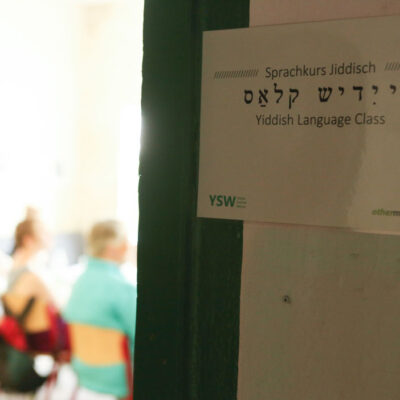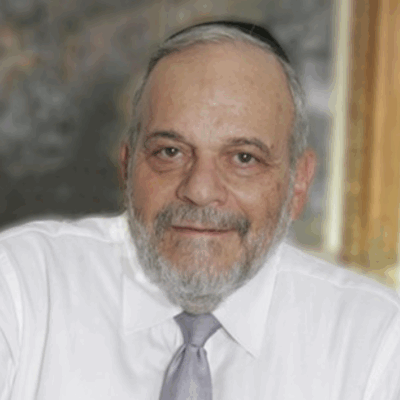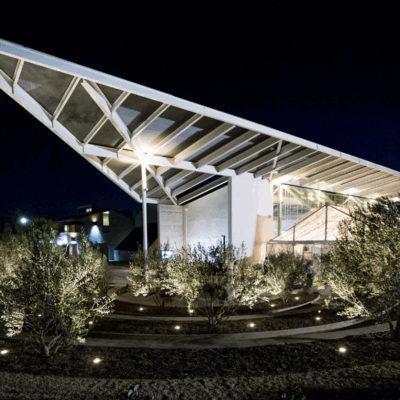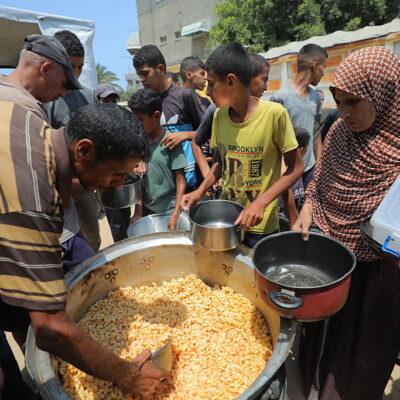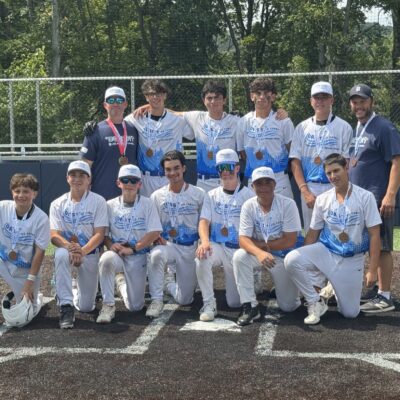Opinion
BEHIND THE SCENES
Building a coalition for good: How we mobilized 30,000 students for the historic march on Washington
In the days that followed the Oct. 7 attack by Hamas, the North American Jewish community rallied to show their connection to Israel. We raised money (or in some cases, withheld money), organized supply collection drives, sent volunteer missions, held demonstrations and counter demonstrations, wrote letters to legislators and campus administrators, attended webinars and informational sessions, and kept up with the constant stream of news and editorials.
During the last days of October, I met one of our Young Judaea alums, Steve, for lunch. At one point during our meal he looked at me and said: “Adina, in 1987 I marched in Washington with Sharansky. It’s time for us to march again.”

Image from the March for Israel on the National Mall in Washington, D.C., on Nov. 14, 2023. Courtesy/Young Judaea
And by us, he meant our youth.
It wasn’t until I read Natan Sharansky’s op-ed in Tablet magazine, urging us to march now for Israel, that his words sank in. As a 114-year-old Zionist youth movement, Young Judaeans had shown up before for civil rights and for Soviet Jewry. We had a mandate to help today’s youth organize a student rally for Israel.
But how did it come to pass that, in just a little over a week, we managed to organize 30,000 young people from across the entire Jewish youth sector in the United States to come together for an historical march for Israel?
To answer that question, we need to look back further.
Building a common-cause coalition
It began a year ago with the revival of the American Zionist Youth Council, a consortium of youth organizations and movements for whom Israel is a key part of their mission. This network began exploring what members might learn from one another about our approaches to Israel education. We also sought to connect our teens and teen professionals to enrich and enliven their conversations and learning about Israel.
Our first project was to build a national Israel leadership summit for teens, in collaboration with Z3 and with the support of the American Zionism Movement, World Zionists Organization and Maimonides Fund. Forty teens from across 10 youth movements traveled to the AZYC Teen Leaders Israel Summit at Z3 in Palo Alto, CA, for a day of learning, networking and relationship building. It was a week later when I turned to this coalition again, aiming to build on the budding relationships we had formed.
With the 10 youth movements from the summit serving as the base, we added additional youth networks: Prizmah for the day schools; Foundation for Jewish Camp for the camps; The Jewish Education Project for synagogue schools and other learning settings; and RootOne for the Israel experience providers.
We needed a sponsor to help us mobilize the thousands of young people and produce a youth-centered event that would be an epic draw, and RootOne stepped up immediately, activating their thousands of alumni from the past two years of Israel trips (and hoping to build interest and excitement for 2024’s summer trips, if they are to happen). Another sponsor, the Combatting Antisemitism Movement, stepped up to cover transportation and security costs beyond those the local federations were covering.
Things started gathering momentum after that: individual teen organizations and campus organizations came out of the woodwork and asked to be a part of this growing coalition. This was the list of participating organizations still in progress at the time of the March, and I am sure many more joined that day:
- Young Judaea
- USY
- Tzofim of North America
- Students Supporting Israel
- StandWithUs
- Ramah Camping Movement
- North American Day Schools and Jewish Summer Camps
- NFTY
- NCSY
- MaccabiUSA
- Lost Tribe
- JCC Maccabi
- Jewish Agency for Israel
- IAC Eitanim
- Hillel
- HaZamir
- Hashomer Hatzair
- Habonim Dror
- Club Z
- Chabad on Campus International,
- Bnei Akiva, BBYO
- Alexander Muss High School in Israel
It was with clarity of mission that this coalition, spanning the continuum of Jewish youth organizations in a historic collaboration, brought 30,000 middle, high school and college students to the largest march for Israel in the history of the United States.
Getting the right people on the bus
Once we had secured the key partners and the funding, we had less than a week to organize ourselves and produce the event. We formed a working steering committee composed of key individuals from our partnering organizations: professionals who had extensive experience and successful track records producing large scale events for youth and were prepared to commit the better part of the week to getting this done. This was a high-functioning team, and we got the job done.
Staying mission-focused and committed to excellence
From the first zoom meeting with this steering committee, we articulated that our goal was to create a youth-centered experience that would bring as many young people to DC as possible and have them leave feeling a sense of unity, pride and empowerment. This guided us through every single decision along the way, and made it easy to say no to things or regain focus when we got off track.
We were also clear that despite the compressed timeline, whatever we pulled off had to be excellent. We might do less, but it had to be great, both because we know that our youth are very discerning when it comes to experiences targeting their demographic and because we felt a sense of pride in producing this project. We were all in.
Checking our organizational egos
Just imagine six high powered individuals representing five different organizations — a perfect recipe for clashing egos, right?
In reality, this experience was everything but that. Somehow we all checked our personal and organizational egos at the door and joined forces to jointly pull this off. We each did what we needed to in order to manage our individual stakeholders and keep them looped in, but never did it interfere with our ability to work. By this point in the war, it has become cliché to say that this moment has built unity and brought together individuals and organizations that are unlikely bedfellows. But what I and my fellow steering committee members experienced and also witnessed across the coalition, was truly extraordinary. As a steering committee we were clear that we wanted as many youth and youth organizations to participate so we brought sensitivity and our shared knowledge and experience of working in intentionally pluralistic settings to get everyone to the proverbial table. And it worked! I cannot tell you how many organizations have since that day remarked how unusual that was and asking, “so, what’s next?” as if it were so obvious that this coalition should exist.
Staying agile and getting the job done
You can just imagine how many glitches come up in the planning of this scale event with less than a week to secure vendors, speakers and performers, order swag and food, and much more.
But each hiccup just fueled our group more: we looked to creative and quick solutions, pushing through when possible and abandoning ideas when that was impossible. The phrase, “So, we have a situation,” became a call to action for this group — not an impediment, as so often is the case. We really inhabited an abundance mindset, refusing to let obstacles deter us from our overall goal. There was little time to contemplate or complain or blame; we had to keep moving because the clock was ticking. Staying agile and letting go of the small things was key. At the end of the day, it was about getting the job done. We agreed that there would be time to process and reflect on lessons learned after the event.
While the net result of mobilizing 30,000 youth to lead the 300,000-person march on Washington is noteworthy, I am sharing these reflections because there are takeaways from the experience worth replicating even in times of non-existential crisis. We can take the key ingredients that made this moment work and apply them to the important work we do on a daily basis.
I want to personally thank each of the organizations that took part in the coalition along with the lead sponsor, RootOne. I also want to thank Shira Hutt of JFNA, who, upon seeing the growing momentum of this youth contingent, had the forethought to bring it into the main march so that they could lead from the front.
Finally, to the steering committee — Simon Amiel, Ian Kandel, Daniel Infeld, Rachel Gildner, Avi Orlow, Nadav Shachmon and yours truly — I ask:
What’s next?
Adina H. Fryman is the CEO of Young Judaea Global.

